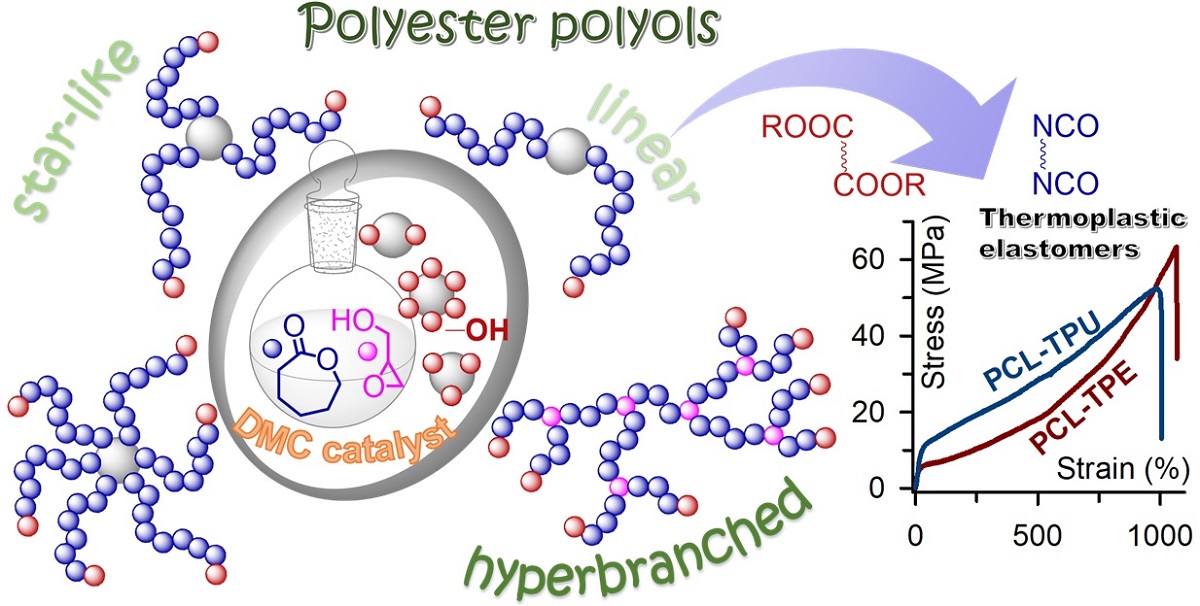A series of polycaprolactones (PCLs) with molecular weights of 950–10,100 g mol−1 and Ð of 1.10–1.87 have been synthesized via one-pot, solvent-free ring-opening polymerization (ROP) of ε-caprolactone (CL) using a heterogeneous double metal cyanide (DMC) catalyst. Various initiators such as polypropylene glycol, ethylene glycol, propylene glycol, glycerol, and sorbitol are employed to tune the number of hydroxyl end groups and properties of the resultant PCLs. Kinetic studies indicate that the DMC-catalyzed ROP of CL proceeds via a coordination mechanism. Branched PCLs copolymers are also synthesized via the DMC-catalyzed copolymerization of CL with glycidol. The α,ω-hydroxyl functionalized PCLs were successfully used as telechelic polymers to produce thermoplastic poly(ester-ester) and poly(ester-urethane) elastomers with well-balanced stress and strain properties.

